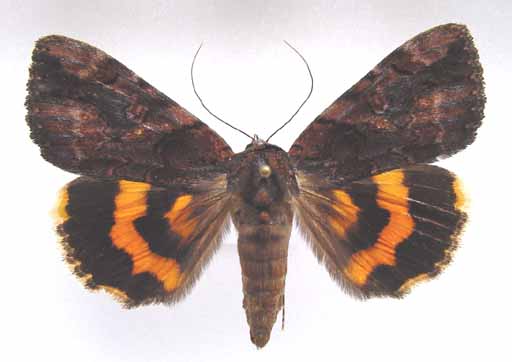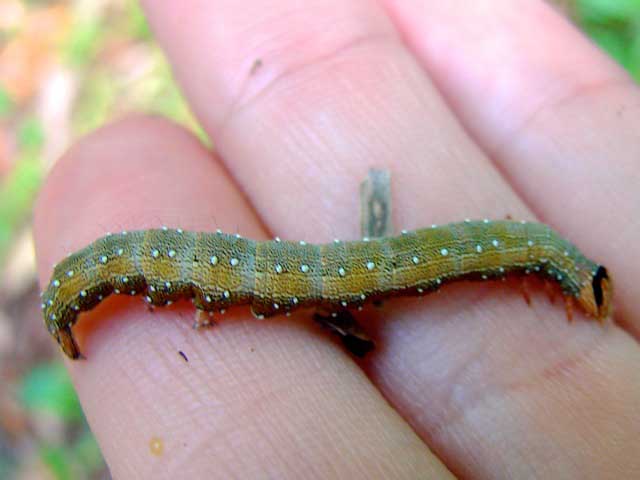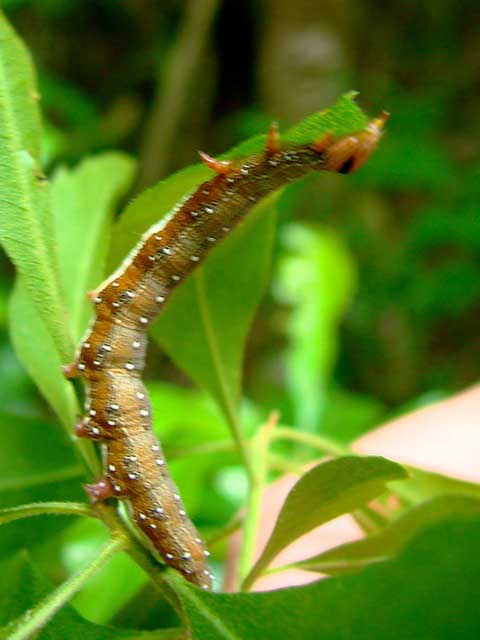Catocala muliercula
Catocala muliercula
kah-TOCK-uh-lahmmmew-lee-er-KEW-luh
Guenee, 1852

The Little Wife Underwing,
by Leroy Simon, Florida.
This site has been created by
Bill Oehlke at oehlkew@islandtelecom.com
Comments, suggestions and/or additional information are welcomed by Bill.
| TAXONOMY:
Superfamily: Noctuoidea
Family: Noctuidae
Group: Noctuinina
Subfamily: Catocalinae
Genus: Catocala, Schrank, 1802
| |
MIDI MUSIC
"Moon River"
copyright C. Odenkirk
MIDI CITYON.OFF
<bgsound src="moon.mid" LOOP=FOREVER>
|
DISTRIBUTION:
Catocala muliercula (wingspan: 54-70mm)
flies from Massachusetts and
Connecticut south to
Florida and
west to Texas and possibly New Mexico.
Arkansas,
Georgia,
Louisiana,
Maryland,
Mississippi,
New Jersey,
New York,
North Carolina,
Pennsylvania,
South Carolina and
Virginia.
Catocala muliercula is the same as C. peramans Hulst,
1884.

Caotacla muliercula, Texas, courtesy of Paula Kennedy
Texas City Prairie Preserve, Galveston County, TX.

Catocala muliercula, June 30, 2003, Virginia Beach, Virginia,
street light,
courtesy of Pierrre Legault.
The black bands of the hindwings tend to be very wide and there is
considerable dark scaling along the inner margins.
The hindwing fringe is very dark as is the general
ground colour of the forewings.
FLIGHT TIMES AND PREFERRED FOOD PLANTS:
In northern
portions of its range, Catocala muliercula flies as a single
generation.
In more southerly locales there may be multiple flights with moths
on the wing from May through July, but it is generally felt that all Catocala
species are univoltine (producing a single brood annually).

Catocala ultronia, Catocala muliercula and Catocala minuta
on fermenting tree sap
courtesy of Steve Walter, Floyd Bennet Field
(Jamaica Bay area of New York) July 6.
Steve writes, "The Little Wife is one of the signature species of
Jamaica Bay -- but this one was 11 days (seems to be a magic number,
or times 2) earlier than the previous early date here. The Little
Underwing was new for Jamaica Bay -- and I had 6 of them. Funny how
that happens."
The Catocala muliercula caterpillar shows a preference for
Myrica cerifera and may limit itself to that host.
ECLOSION:
Adults eclose from pupae formed under leaf litter.
SCENTING AND MATING:
Catocala muliercula females
emit an airbourne pheromone and males use their antennae to track the
scent plume.
EGGS, CATERPILLARS, COCOONS, AND PUPAE:
Eggs are deposited on tree bark in the fall and hatch the following spring.
Mature larvae Image courtesy of James Adams. |
 |
Steve Daniel sends the following images of what we both believe are a Catocala muliercula larva. The foodplant, location, date and general appearance
all seem to indicate muliercula.

Catocala muliercula fifth instar, Gainesville, Florida,
April 18, 2009, courtesy of Steve Daniel, tentative id by Steve and Bill Oehlke.

Catocala muliercula fifth instar, Gainesville, Florida,
April 18, 2009, courtesy of Steve Daniel, tentative id by Steve and Bill Oehlke.

Catocala muliercula fifth instar, Gainesville, Florida,
April 18, 2009, courtesy of Steve Daniel, tentative id by Steve and Bill Oehlke.
If you have confirmations, corrections or suggestions, please send Bill Oehlke.
Larval Food Plants
Listed below are primary food plant(s) and alternate food plants.
It is hoped that this alphabetical listing followed by the common
name of the foodplant will prove useful. The list is not exhaustive,
although some species seem very host specific.
Experimenting with closely related foodplants is worthwhile.
Myrica cerifera.......
|
Southern bayberry/wax myrtle
|
This page is brought to you by Bill Oehlke and the
WLSS. Pages are on space rented from Bizland. If you would like to become a "Patron of the Sphingidae/Catocala Sites",
contact Bill.
Please send sightings/images to Bill. I will do my best to respond to requests for identification help.
Enjoy one of nature's wonderments: Live Saturniidae (Giant Silkmoth) cocoons.

|

To show appreciation for this site, click on the flashing
butterfly to the left, a link
to many worldwide insect sites. |
Return to Canadian Index
Return to Main Index









